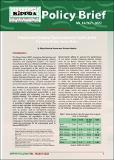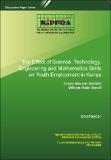| dc.date.accessioned | 2021-10-18T13:44:05Z | |
| dc.date.available | 2021-10-18T13:44:05Z | |
| dc.date.issued | 2021 | |
| dc.identifier.uri | http://repository.kippra.or.ke/handle/123456789/3271 | |
| dc.description.abstract | The Kenya Vision 2030 recognizes fish farming and aquaculture as a source of food security, poverty reduction, and employment creation. The various Kenya National Bureau of Statistics (KNBS) economic surveys show that there has been an increase in domestic consumption of fish, which has resulted in the country’s fish imports to rise from 0.3 tonnes in 2000 to 2.5 tonnes in 2017. Further, the maximum sustainable yield of Kenya’s marine and coastal waters Exclusive Economic Zone (EEZ), which is majorly for commercial fishing, is between 15,000 and 300,000 metric tonnes. That said, freshwater fish account for close to 98% of Kenya’s aquaculture fish | en |
| dc.language.iso | en | en |
| dc.publisher | Kenya Institute for Public Policy Research and Analysis | en |
| dc.relation.ispartofseries | PB/16/2021-2022 | |
| dc.subject | Employment Creation | en |
| dc.subject | Employment Opportunities | en |
| dc.subject | Youths | en |
| dc.subject | Food Security | en |
| dc.subject | Fish Production | en |
| dc.title | Policy Brief No. 16 of 2021-2022 on Employment Creation Opportunities for Youths in the Fisheries Sector Value Chain | en |
| dc.type | KIPPRA Publications | en |
| ppr.contributor.author | Munene, Mujuri & Wanjiku, Abraham | |




